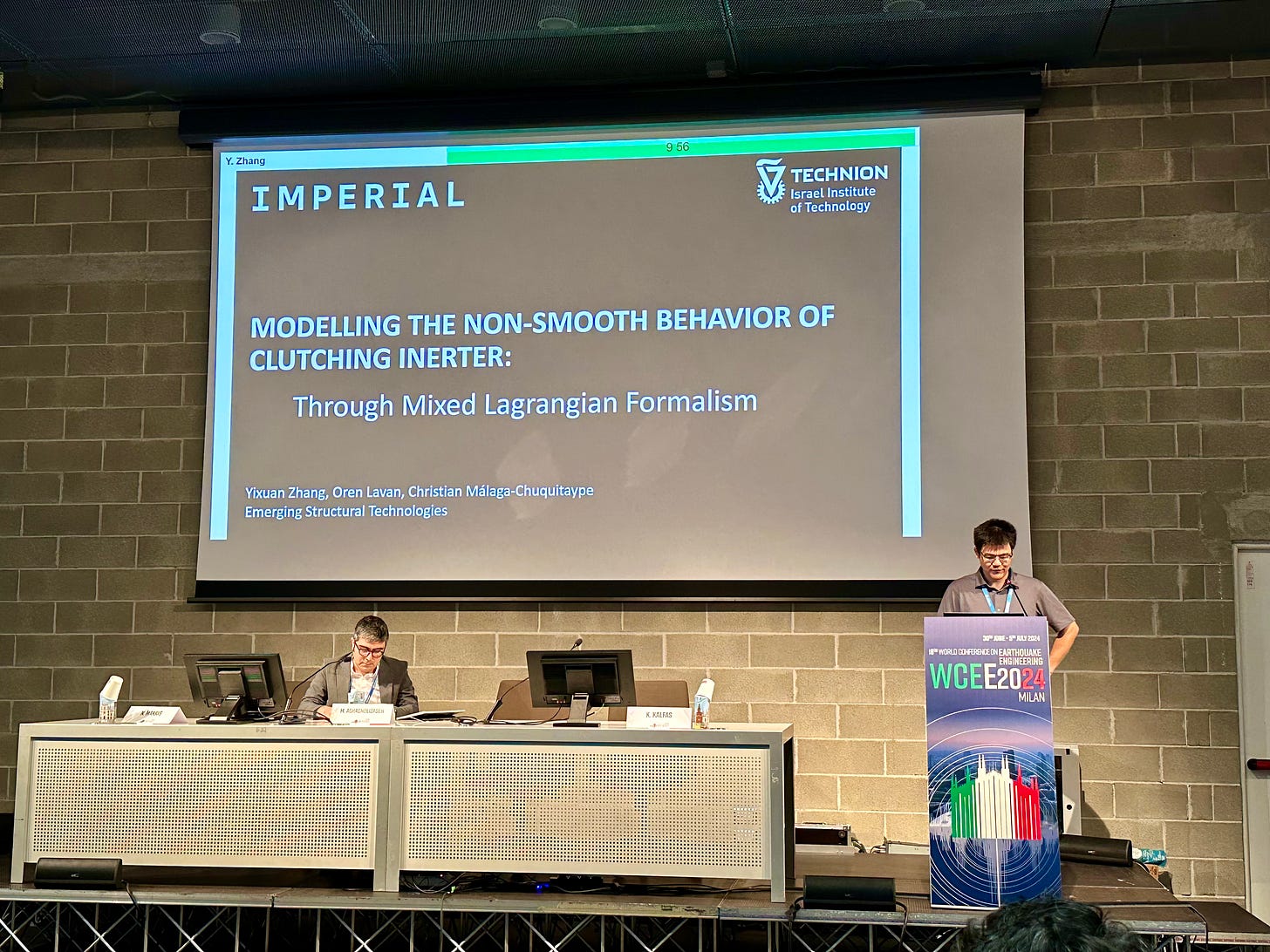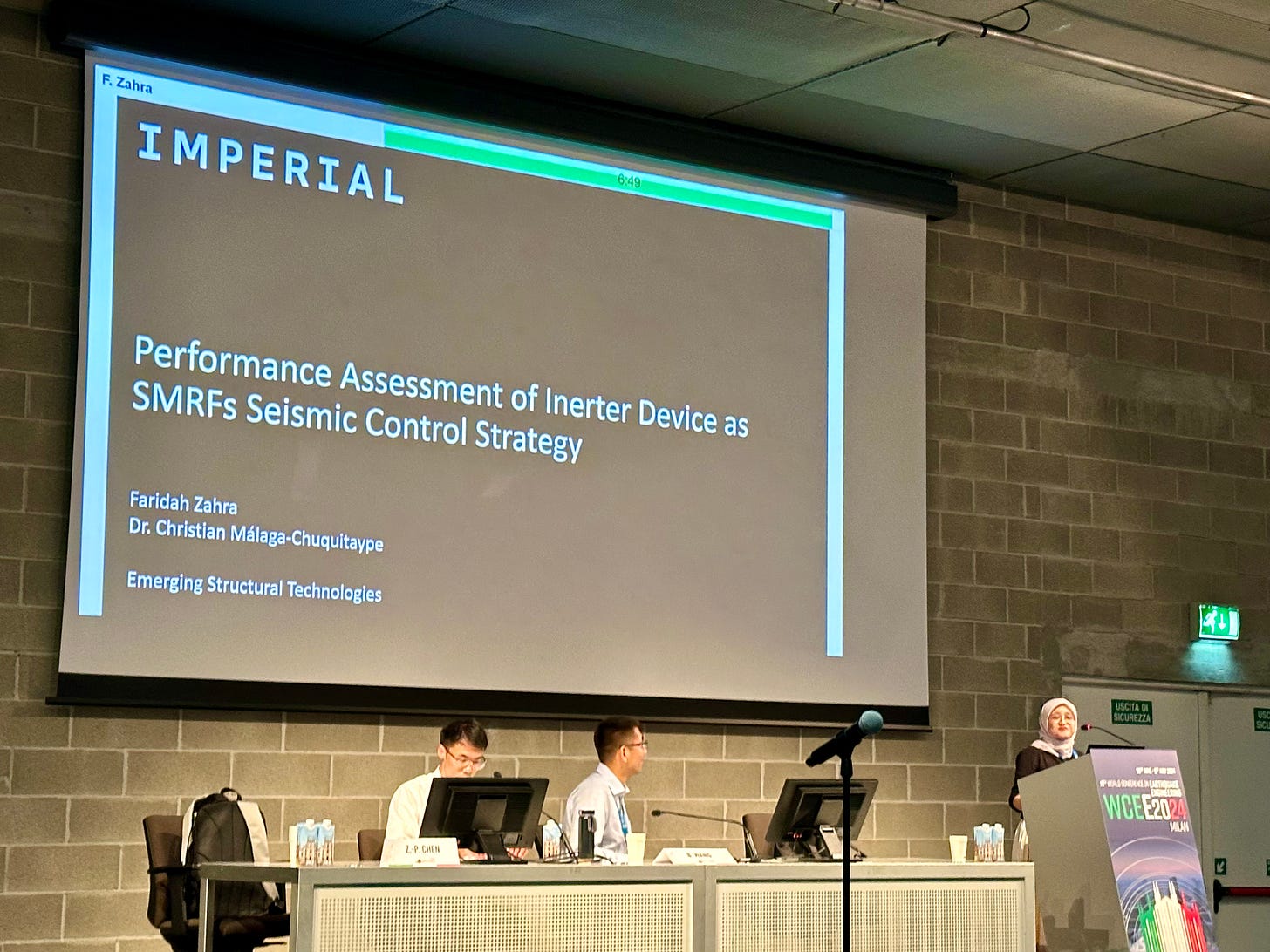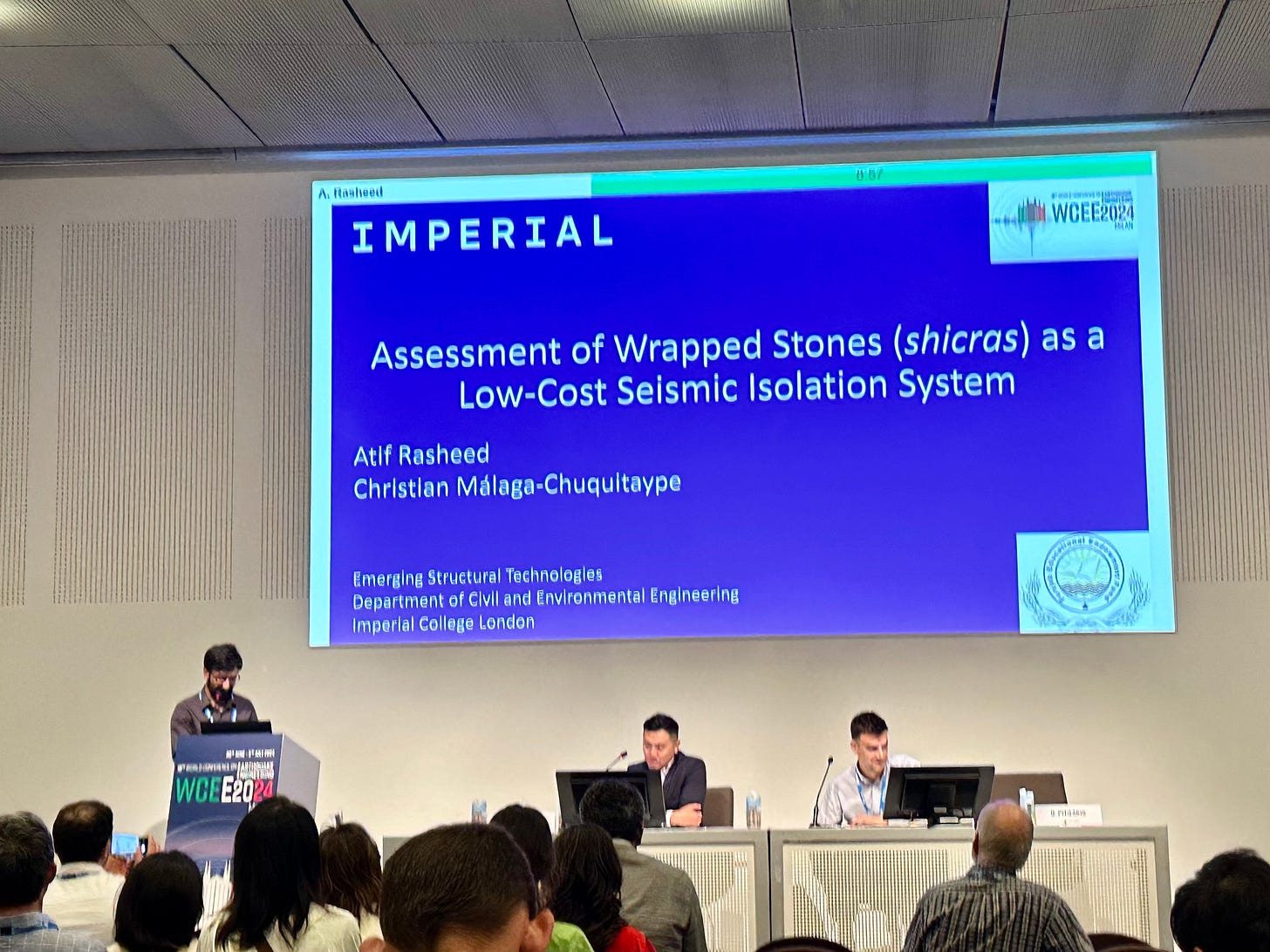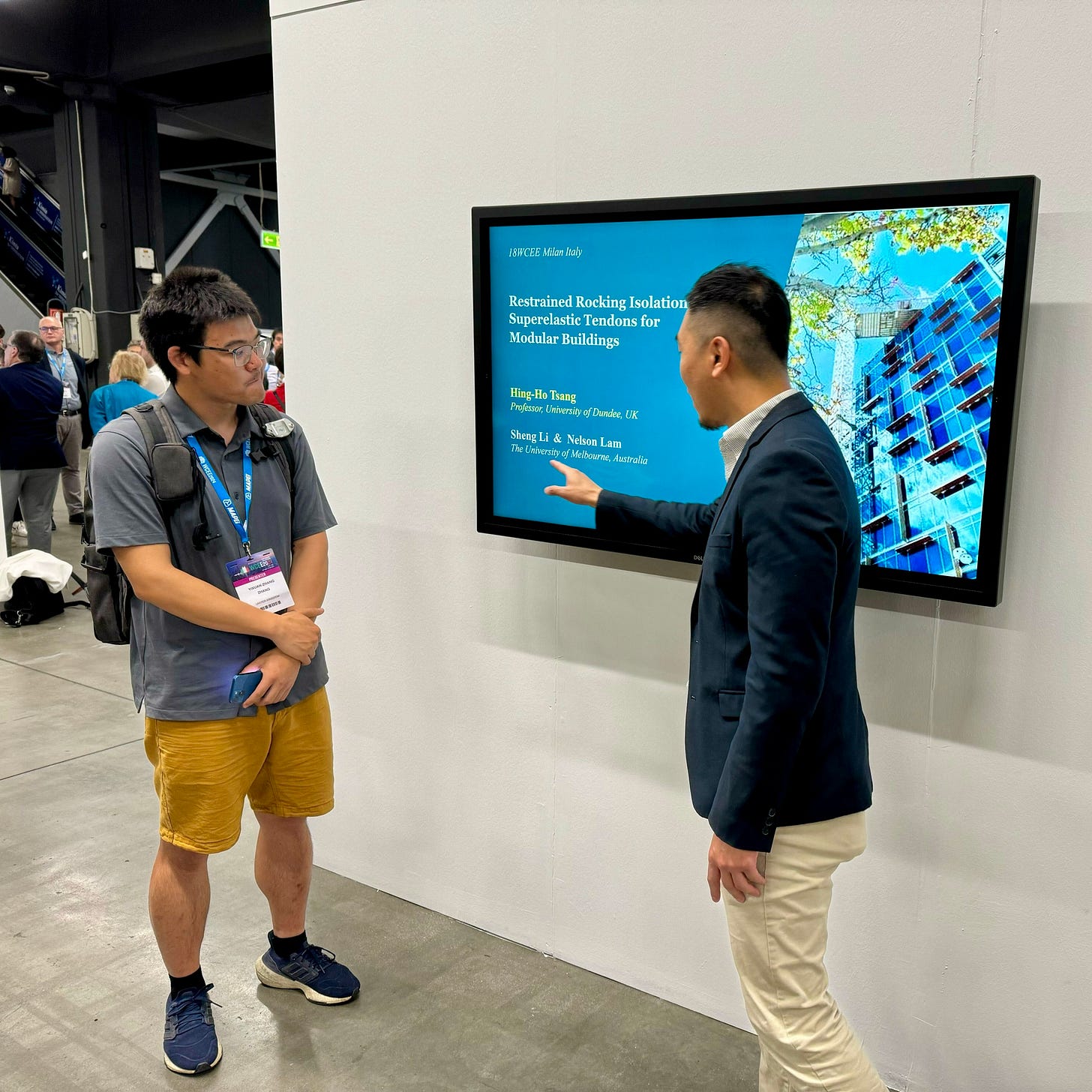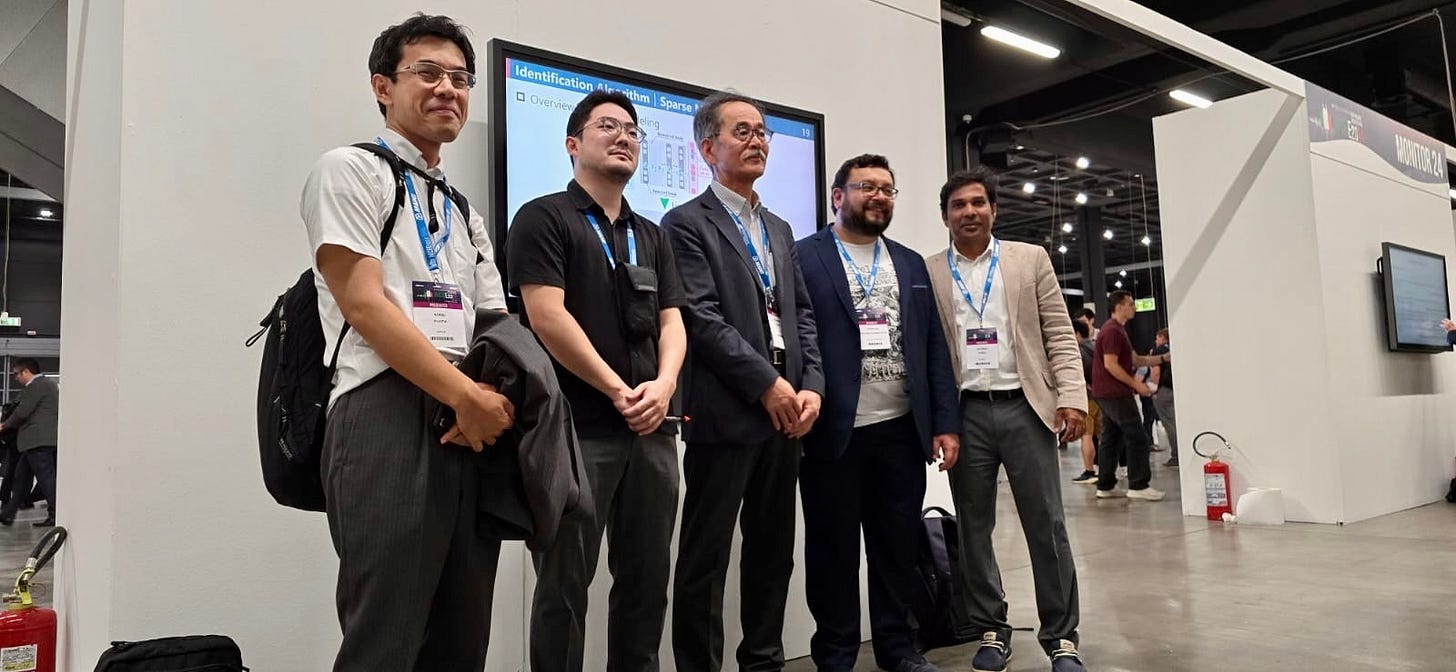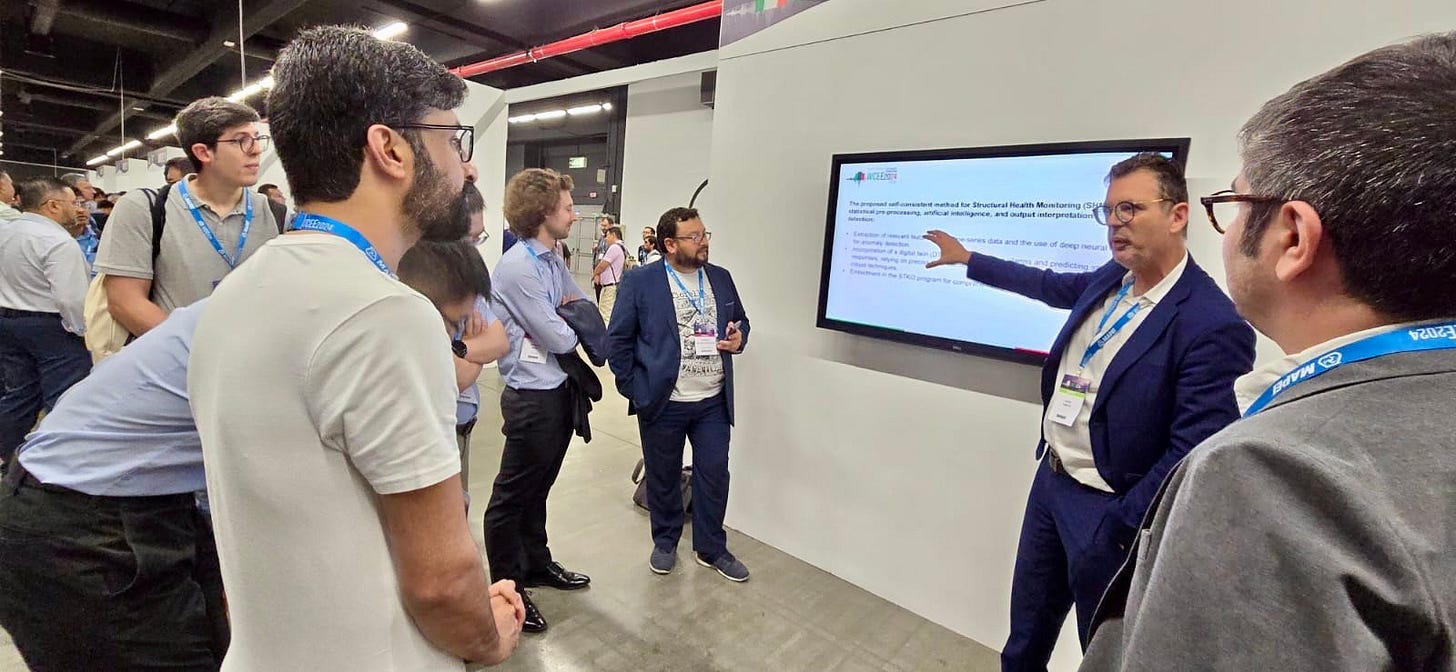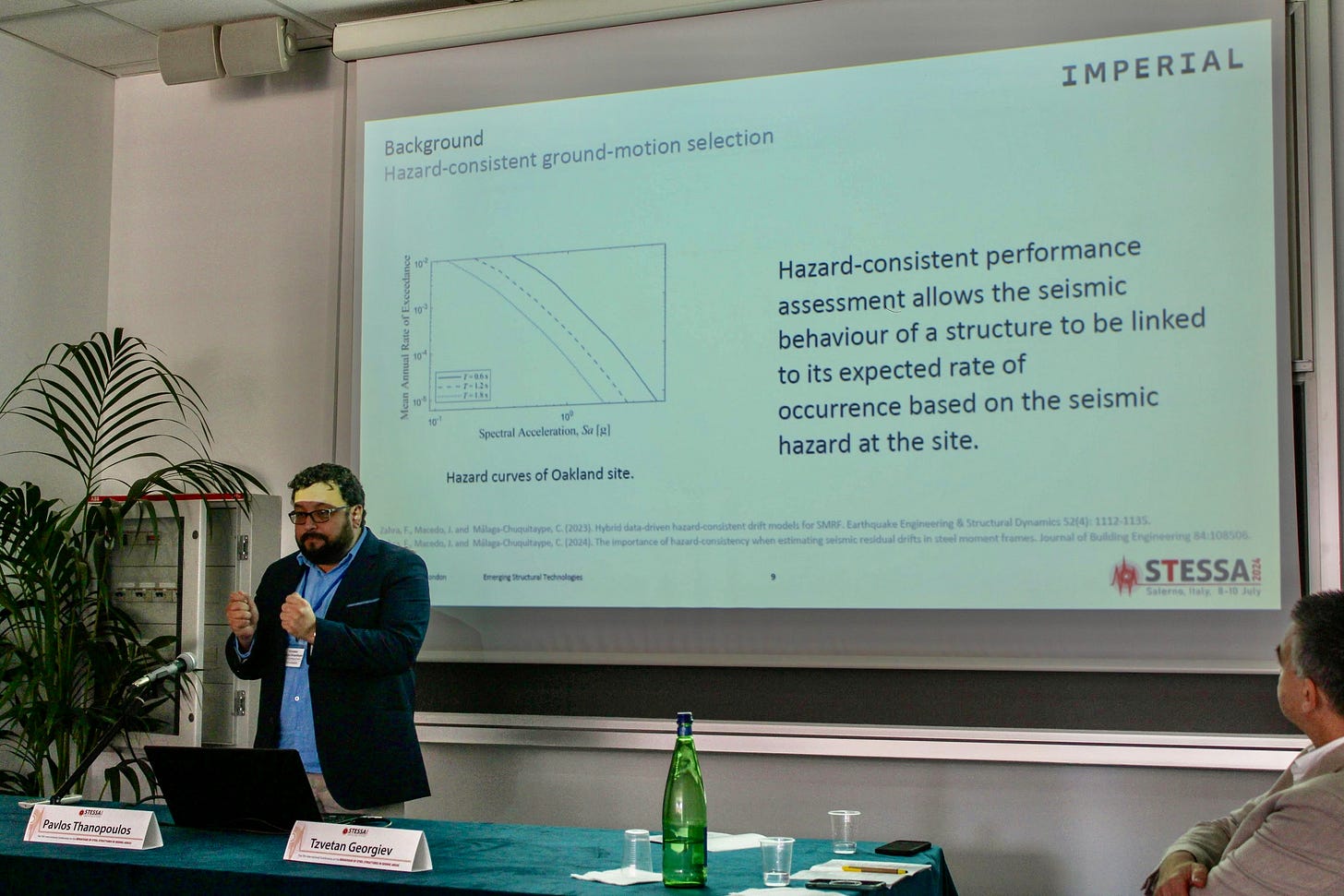World Conference on Earthquake Engineering and STESSA 2024
Our Research Group participated in the 18th WCEE in Milan and the STESSA 2024 in Salerno
We recently spent a couple of busy and fascinating weeks in Italy, catching up with old friends and collaborators while forming exciting new partnerships. As someone born in the highlands of Peru, I do not take very well the combination of heat and humidity that Milan presented us with—at least not without a beach nearby to cool off! Nonetheless, Milan was spectacular. Although I previously spent about a year in Pavia (during my earthquake engineering training) and used to commute to Milan almost weekly, I realised I hadn't fully appreciated the richness and allure of Milan until this visit. We ate, we drunk, we were merry. It was truly fantastic!
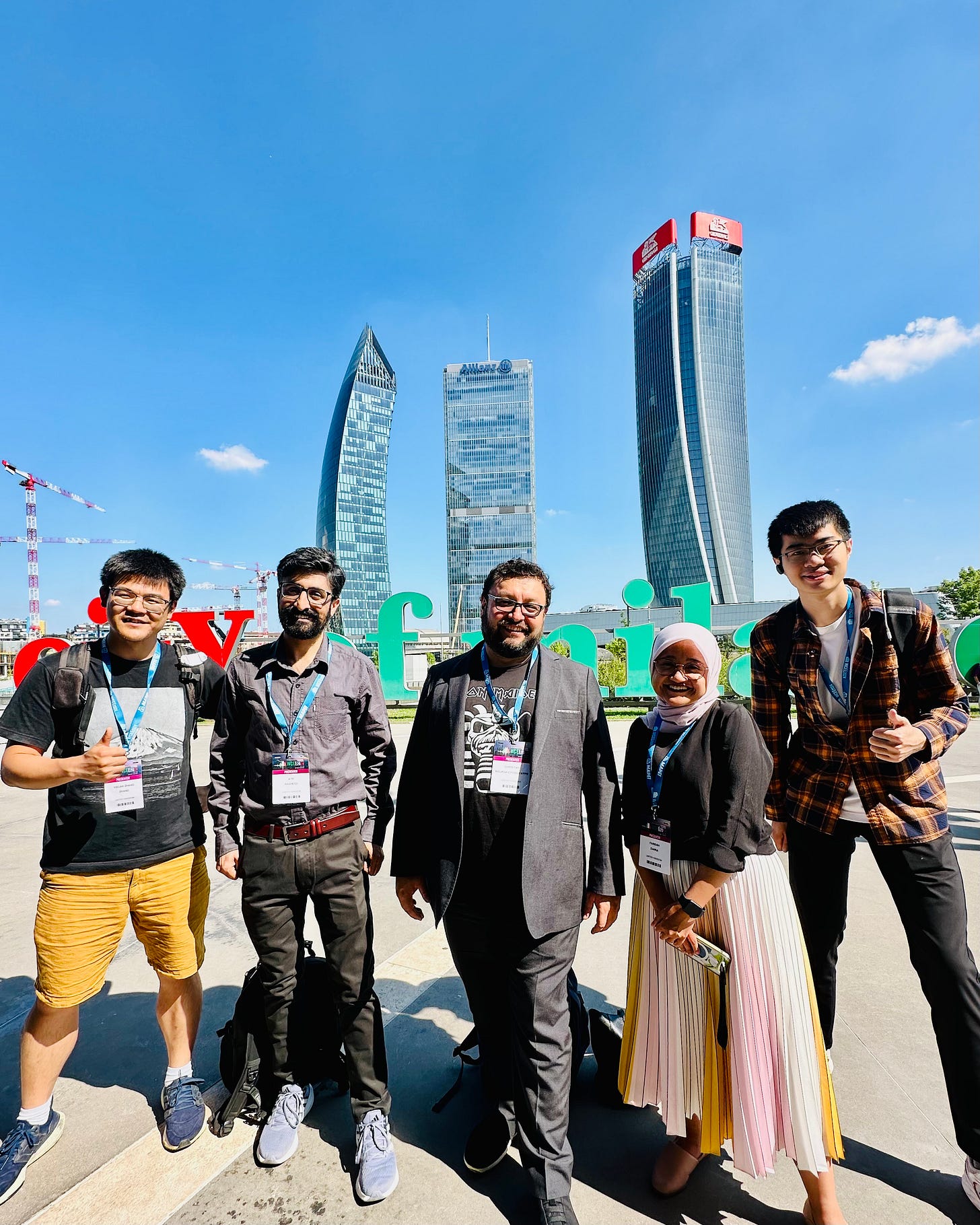
The World Conference on Earthquake Engineering (WCEE) was HUGE! Like, 4,250 people huge! Yixuan, Faridah and Atif had the opportunity to present their research. You can see their papers here, here, and here. In addition, we also had a couple of monitor presentations, including some preliminary work I am doing on my free times on the use of inerters in tall and slender structures, and Shirley’s work on the use of Physics-informed Neural Networks to predict the rocking response of rigid blocks. Besides, both me and Yixuan chaired a couple of sessions.
With so many monitor and technical sessions, master lectures, keynotes, and more, the WCEE in Milan was a grandiose and grandiloquent event. It was a stark contrast with the STESSA conference in Salerno, wich had 300 participants, all focused on the seismic response of steel structures. But both conferences were amazing opportunities to experience Italy's incredible richness and contrast, in every single way— from the culinary to the organizational.
At STESSA, I had the privilege of presenting the final chapter of Faridah’s thesis, where she explores the use of grounded inerters in steel Moment Resisting Frames from a hazard-consistent perspective. You can check out Faridah’s STESSA paper here. Turns out inerters are very effective for tacking soft-storey damaged structures!




